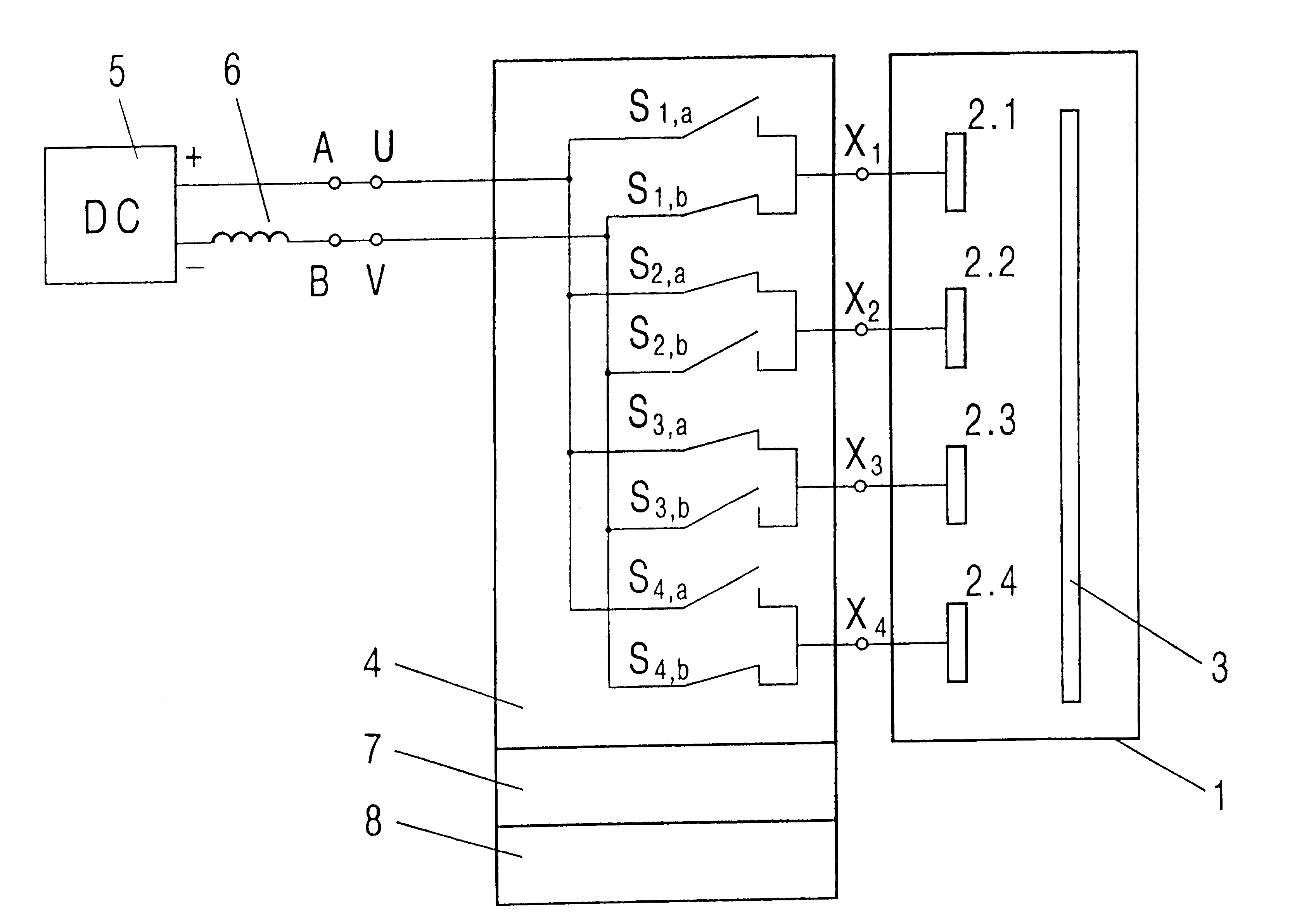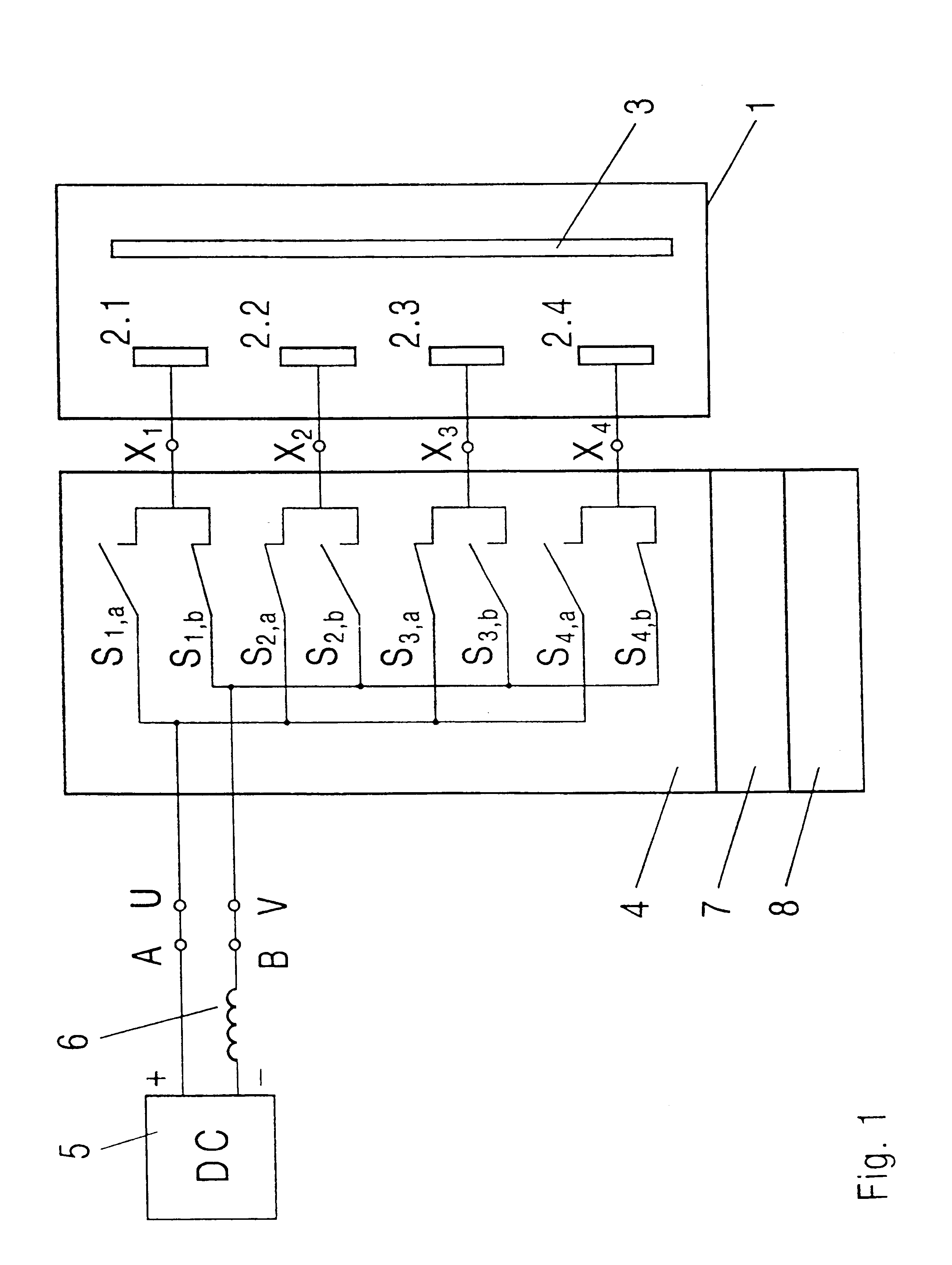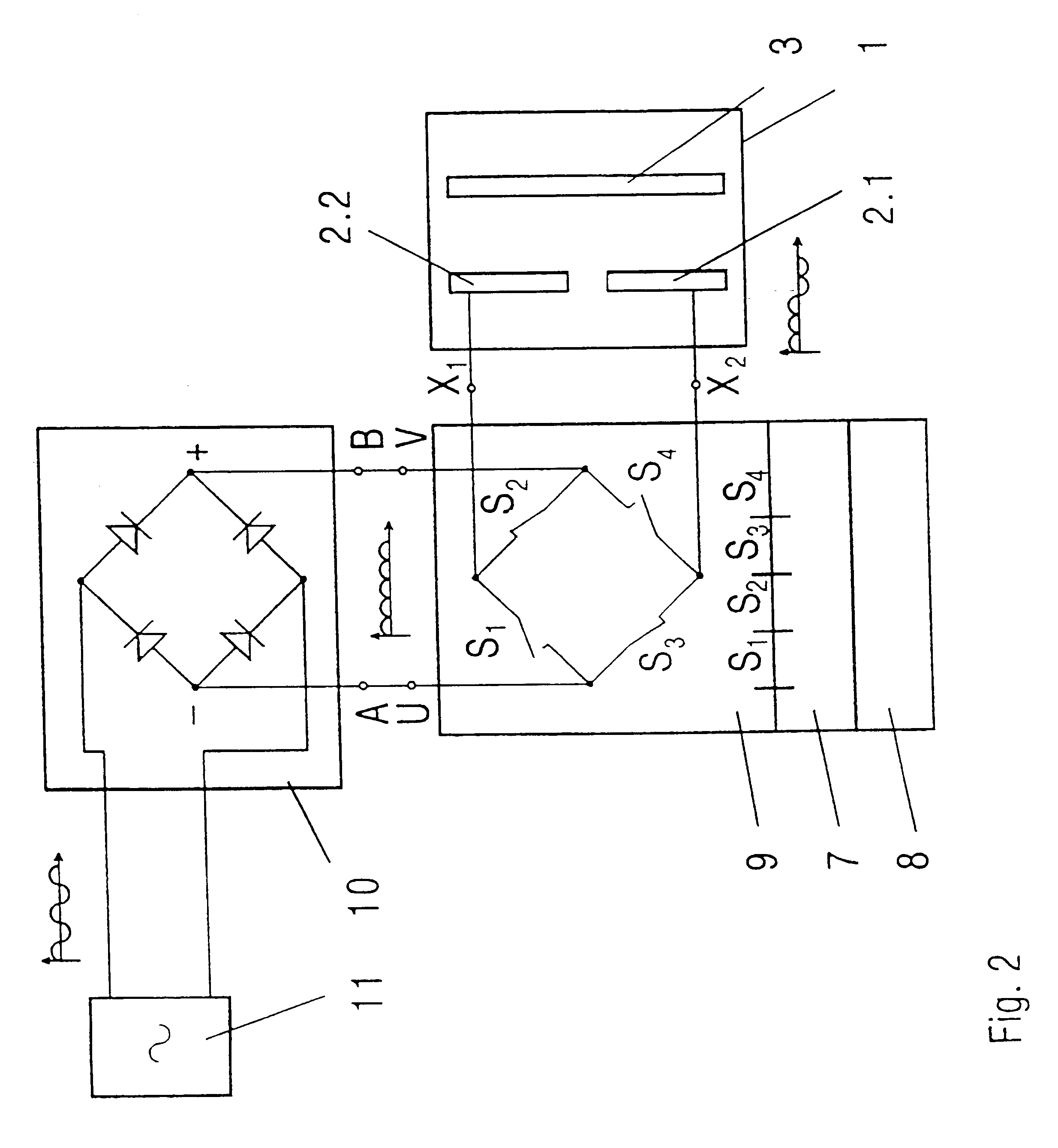Process and system for operating magnetron discharges
- Summary
- Abstract
- Description
- Claims
- Application Information
AI Technical Summary
Benefits of technology
Problems solved by technology
Method used
Image
Examples
Embodiment Construction
In FIG. 1, four magnetron electrods 2.1-2.4 and a substrate 3 to be coated are disposed in a vacuum chamber 1. The magnetron electrodes 2.1-2.4 contain the material to be sputtered in the form of targets, which have been respectively penetrated by the magnetic field of the corresponding magnetron electrode 2.1-2.4. The magnetron electrodes 2.1-2.4 are connected by way of outputs X.sub.1 -X.sub.4 with a controlled electronic switch unit 4. Each output X.sub.1 -X.sub.4 is respectively connected to two switches S.sub.a and S.sub.b. The controlled electronic switch unit 4 is connected by way of the inputs U and V and with the poles A and B of a direct current generator 5, wherein the direct current generator 5 comprises an inductor 6 at the pole B. The control of the electronic switch unit 4 is carried out by the control unit 7. A detector circuit 8 for arc discharges is integrated into the device.
Through direct current generator 5, the inductor 6, and the controlled electronic switch u...
PUM
| Property | Measurement | Unit |
|---|---|---|
| Frequency | aaaaa | aaaaa |
| Frequency | aaaaa | aaaaa |
| Frequency | aaaaa | aaaaa |
Abstract
Description
Claims
Application Information
 Login to View More
Login to View More - R&D
- Intellectual Property
- Life Sciences
- Materials
- Tech Scout
- Unparalleled Data Quality
- Higher Quality Content
- 60% Fewer Hallucinations
Browse by: Latest US Patents, China's latest patents, Technical Efficacy Thesaurus, Application Domain, Technology Topic, Popular Technical Reports.
© 2025 PatSnap. All rights reserved.Legal|Privacy policy|Modern Slavery Act Transparency Statement|Sitemap|About US| Contact US: help@patsnap.com



